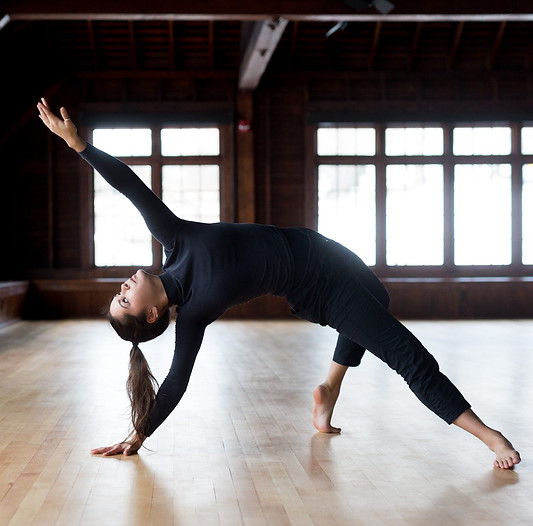Molly McGehee
Talia Preis
The Honolulu Museum of Art

Talia Preis was born and raised in Honolulu, Hawai’i. She grew up dancing the hula (native Hawaiian dance) and trained in classical ballet for 15 years. Through her education at Smith College, she discovered new modes of creative expression through interdisciplinary work in contemporary dance, art, and technology. She found the enriching possibilities of making connections across her embodied work as a dancer and her digital productions as a filmmaker. Talia has featured in repertoire works by Doug Varone, David Dorfman, Camille A. Brown, Alex Springer and Xan Burley, as well as works by Rodger Blum, Bronwen MacArthur, Anna Margaret, and Sarah Seder. In Fall 2021, Talia will be pursuing the Choreomundus International Master in Dance Knowledge, Practice, and Heritage at the University of Clermont Auvergne in France, Norwegian University of Science and Technology in Norway, University of Szeged in Hungary, and the University of Roehampton in the UK.
Dancing with an Untitled Painting by Robert Motherwell (1963)
"It’s such a beautiful space, the museum space, compared to studio space and you’re so aware. I was so aware of my body and where I was in the space way more than I would be in a studio.”
Initial Thoughts...
“The museum recently opened up an exhibition called Reflect a week before my visit. So they had a lot of contemporary art. Visitors were able to scan a QR code and online there were all these people generating feedback with their reflections on a certain piece. If they can't come to the museum they could see it online too. I think the message, the reflection of each artist... and also other peoples’ feedback...reading that really got me thinking about each work. But I didn't want to get swayed too much by other people’s interpretations of an artwork.”
Dancing with Untitled (We Are Not Your Servants) by Barbara Kruger (1990)
When visitors enter a museum, they might already feel physically limited. There are certain social cues one follows with their body in the gallery space. Did you feel like you were able to “disorient” at all or completely let go?
"I definitely felt like I could disorient in a way that was really liberating in a museum. I felt contained spatially but my mind was definitely not contained. Everything that was offered to me in that moment, I told myself I was going to take it, go with it, and see where it lead to. And with my dance thesis too, I've been thinking 'how do you use such a limited space? And what can you do, what are the possibilities of creating a dynamic space when you feel very limited. When you’re in this little container, what other things can you do?' So I guess having that mindset too definitely helped me go for it."
Dancing with Sonus by Barbara Cooper (1995)
How was it having other people in the space with you that you'd just met (two HoMA staff)? Did you ever feel uncomfortable or like you were subconsciously starting to "perform"?
"When you enter a studio and you're by yourself you’re not thinking about the presence of another human - and obviously that effects you in any space - but for me, hearing their conversation before I danced, I was thinking, 'Oh they’re going to be watching me,' I automatically get a little bit of that performative feeling that slowly approaches but it only took a minute of just being in that space to feel comfortable. Also, I was just so distracted by what was happening. Everything was so quick! Once I settled into it and got in that mode, really settling there in the space...it was so nice. Knowing that they were there, I don’t think that affected the way I moved."
Dancing with Words are Deeds by Joseph Kosuth
What drew you into each work?
"The pieces I chose were very different. After going through everything the week before I danced, I chose the pieces that offered the most for me to work with and the pieces that offered the least for me to work with. For example, in the Words Have Deeds work...sometimes text can really bother me. One thing I’ve never liked in dance is when people speak. It feels like you’re labeling something. I’ve always felt like that, so when I saw the Kosuth piece, I thought 'oh neon lights this is funny.' But I had a strong opinion about it...How can I work with that? Obviously, it’s generating something within me and it's telling me something about myself which is really interesting so I thought, okay let’s work with this, let’s do something with this. It was generating little things about myself that I wasn’t conscious of."
Concluding Thoughts...
"The experience was so rich. I can recreate this experience in other spaces too using the same motifs, ideas, emerging questions, and themes. It’ll be an ongoing practice within myself too because I know how I felt and how I moved differently there...but just because it was there in the museum doesn't mean it can’t continue elsewhere."